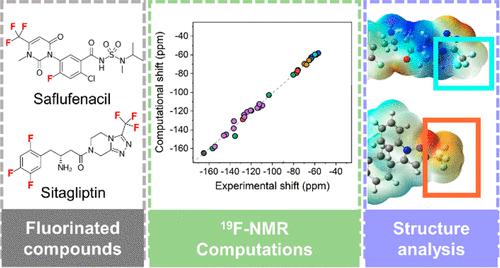当前位置:
X-MOL 学术
›
Environ. Sci. Technol.
›
论文详情
Our official English website, www.x-mol.net, welcomes your
feedback! (Note: you will need to create a separate account there.)
Fluorinated Pharmaceutical and Pesticide Photolysis: Investigating Reactivity and Identifying Fluorinated Products by Combining Computational Chemistry,19F NMR, and Mass Spectrometry
Environmental Science & Technology ( IF 10.8 ) Pub Date : 2024-02-10 , DOI: 10.1021/acs.est.3c09341 Akash P Bhat 1 , William C K Pomerantz 2 , William A Arnold 1
Environmental Science & Technology ( IF 10.8 ) Pub Date : 2024-02-10 , DOI: 10.1021/acs.est.3c09341 Akash P Bhat 1 , William C K Pomerantz 2 , William A Arnold 1
Affiliation

|
Fluorinated breakdown products from photolysis of pharmaceuticals and pesticides are of environmental concern due to their potential persistence and toxicity. While mass spectrometry workflows have been shown to be useful in identifying products, they fall short for fluorinated products and may miss up to 90% of products. Studies have shown that 19F NMR measurements assist in identifying and quantifying reaction products, but this protocol can be further developed by incorporating computations. Density functional theory was used to compute 19F NMR shifts for parent and product structures in photolysis reactions. Computations predicted NMR spectra of compounds with an R2 of 0.98. Computed shifts for several isolated product structures from LC-HRMS matched the experimental shifts with <0.7 ppm error. Multiple products including products that share the same shift that were not previously reported were identified and quantified using computational shifts, including aliphatic products in the range of −80 to −88 ppm. Thus, photolysis of fluorinated pharmaceuticals and pesticides can result in compounds that are polyfluorinated alkyl substances (PFAS), including aliphatic-CF3 or vinyl-CF2 products derived from heteroaromatic-CF3 groups. C–F bond-breaking enthalpies and electron densities around the fluorine motifs agreed well with the experimentally observed defluorination of CF3 groups. Combining experimental-computational 19F NMR allows quantification of products identified via LC-HRMS without the need for authentic standards. These results have applications for studies of environmental fate and analysis of fluorinated pharmaceuticals and pesticides in development.
中文翻译:

氟化药物和农药光解:结合计算化学、19F NMR 和质谱研究反应性并鉴定氟化产物
药物和农药光解产生的氟化分解产物由于其潜在的持久性和毒性而受到环境问题的关注。虽然质谱工作流程已被证明可用于识别产品,但它们在识别氟化产品方面存在不足,并且可能会漏掉高达 90% 的产品。研究表明19 F NMR 测量有助于识别和量化反应产物,但该协议可以通过合并计算进一步开发。密度泛函理论用于计算光解反应中母体和产物结构的19 F NMR 位移。计算预测化合物的 NMR 谱的 R 2为 0.98。从LC-HRMS计算出的几种分离产物结构的位移与源自杂芳族-CF 3基团的<0 id=3>3 或乙烯基-CF 2产物的实验位移相匹配。氟基团周围的 C-F 键断裂焓和电子密度与实验观察到的 CF 3基团的脱氟非常一致。实验与计算19 F NMR 相结合,可以对通过 LC-HRMS 鉴定的产物进行定量,而无需可靠的标准品。这些结果可用于环境归趋研究以及开发中的氟化药物和农药的分析。
更新日期:2024-02-10
中文翻译:

氟化药物和农药光解:结合计算化学、19F NMR 和质谱研究反应性并鉴定氟化产物
药物和农药光解产生的氟化分解产物由于其潜在的持久性和毒性而受到环境问题的关注。虽然质谱工作流程已被证明可用于识别产品,但它们在识别氟化产品方面存在不足,并且可能会漏掉高达 90% 的产品。研究表明19 F NMR 测量有助于识别和量化反应产物,但该协议可以通过合并计算进一步开发。密度泛函理论用于计算光解反应中母体和产物结构的19 F NMR 位移。计算预测化合物的 NMR 谱的 R 2为 0.98。从LC-HRMS计算出的几种分离产物结构的位移与源自杂芳族-CF 3基团的<0 id=3>3 或乙烯基-CF 2产物的实验位移相匹配。氟基团周围的 C-F 键断裂焓和电子密度与实验观察到的 CF 3基团的脱氟非常一致。实验与计算19 F NMR 相结合,可以对通过 LC-HRMS 鉴定的产物进行定量,而无需可靠的标准品。这些结果可用于环境归趋研究以及开发中的氟化药物和农药的分析。

















































 京公网安备 11010802027423号
京公网安备 11010802027423号